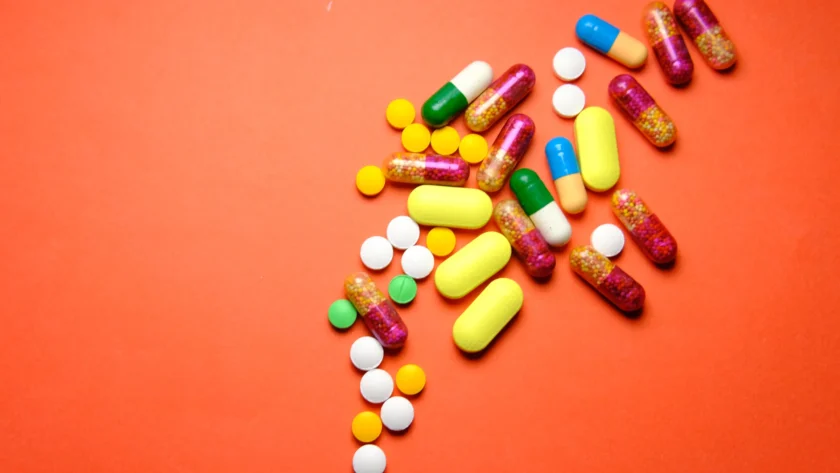As a health and wellness researcher and coach I have been learning about sneaky tricks that supplement companies have used for many years to cheapen, dilute or even create toxic by-products in their supplements. This has taken me a lot of time, money and reading to learn to process so that I’m not wasting my hard earned dollars on cheap diluted crap, and believe me when I say.. there’s a lot of it out there.
Today we’ll be covering five added fillers that you will find on the back of supplement labels that may be red flags as to why the product might not be worth purchasing. This isn’t 100% but the more of these you see on the back the more you should question the integrity, quality and effectiveness of the product.
Some of these are more questionable than others, to which I will clarify. However some are simply worth avoiding to the best of your ability.
6 Added Ingredients in Supplements Worth Avoiding
- Magnesium stearate: Magnesium stearate is a commonly used additive in supplements that helps prevent ingredients from sticking together and also serves as a lubricant. It is not a natural substance but is derived from stearic acid, which can be obtained from animal or vegetable sources.Magnesium stearate: Magnesium stearate has been found to be safe for consumption and is generally recognized as safe (GRAS) by the U.S. Food and Drug Administration (FDA). There is some concern that magnesium stearate may decrease the absorption of nutrients in the body, but this has not been proven by scientific studies. Overall, magnesium stearate is considered to have no significant adverse health effects. This is the general consesnsus. However, stearic acid which is half of the magnesium stearate formula can cause indigestion and irritation to the body, skin and stomach.
- Titanium dioxide: Titanium dioxide is a white pigment that is commonly used in supplements to give them a bright, white color. It is not a natural substance but is synthesized from titanium ore.Titanium dioxide: Although titanium dioxide is considered safe for consumption by the FDA, some studies have shown that it may have potential negative health effects. Research has suggested that titanium dioxide nanoparticles may have toxic effects on cells and could potentially cause inflammation and damage to DNA. However, more research is needed to fully understand the health effects of titanium dioxide. That’s a bit questionable if you ask me.
- Silicon dioxide: Silicon dioxide is a common anti-caking agent used in supplements to prevent ingredients from clumping together. It is not a natural substance but is derived from silicon, which is found in rocks and minerals.Silicon dioxide: Silicon dioxide is considered safe for consumption and has no significant adverse health effects. It is a common food additive and is generally recognized as safe by the FDA. Some studies have suggested that silicon dioxide may have potential health benefits, such as improving bone health and reducing the risk of Alzheimer’s disease. However, this does depend how it’s derived. Silicon dioxide can be derived from sand mining and the purification of quartz. This may be okay. However, some silicon dioxide is derived from corn which is genetically modified and can cause all sorts of digetsive issues. The source is tough to determine so it’s hard to tell whether it’s alright or not.
- Maltodextrin: Maltodextrin is a carbohydrate that is commonly used in supplements as a filler, bulking agent, or thickener. It is not a natural substance but is derived from corn, rice, or potato starch.Maltodextrin: Maltodextrin is considered safe for consumption and has no significant adverse health effects. However, it is a high-glycemic index carbohydrate and may cause blood sugar levels to spike, which could be problematic for people with diabetes or insulin resistance. It could also be from a pesticide soaked piece of gmo corn or chemically sprayed potatoes. Potatoes are one of the most sprayed crops with chemicals so you want to make sure to only eat organic tomatoes but there’s a very very high likelihood that maltodextrin is almost always derived from non-organic corn or potato starch.
- Polyethylene glycol (PEG): Polyethylene glycol is a synthetic polymer that is commonly used in supplements as a solubilizer, emulsifier, or lubricant. It is not a natural substance but is synthesized from ethylene oxide, which is a petrochemical.Low doses can cause damage and high doses of PEG have been associated with kidney damage and other adverse effects. It is also possible for people to have an allergic reaction to PEG, which can cause symptoms such as hives and difficulty breathing. Definitely a dangerous ingredient in supplements.
- Artificial Coloring (Dye’s): This is used to create a color effect in a supplement to market it as a certain color. This however definitely has very negative effects on the health of the body.Artificial coloring can be bad for health in several ways. First, some artificial colors have been linked to hyperactivity and other behavioral problems in children, especially those with attention deficit hyperactivity disorder (ADHD). For example, studies have suggested that certain synthetic food dyes, such as Red 40, Yellow 5, and Yellow 6, may exacerbate hyperactive behavior in children.Second, some artificial colors have been linked to allergic reactions and other adverse health effects. For example, some people may be allergic to certain synthetic food dyes and may experience symptoms such as hives, itching, or difficulty breathing.Finally, some artificial colors may be linked to more serious health problems, such as cancer. While there is still debate about the potential risks of certain artificial colors, some studies have suggested that long-term exposure to certain synthetic food dyes may increase the risk of cancer in humans.
As you can see there are many different ingredients found in supplements that are questionable at best. Some of these aren’t so bad but some are quite awful. You really have to do your homework and read the supplement labels for what you’re buying. It’s not the front of the bottle that matters, it’s the back.
If you read something on the back that you do not recognize you can do a search online or search our greenlivingtribe.com website above for guidance and support on understanding what is worth investing into and what is not.
Radiate 21 is Free of All Additives:
One supplement worth considering is Radiate 21, which is comprised of 21 botanicals from Amazonian, Ayurvedic and Chinese plants for gut health, lymphatic health and EMF protection. You can find more at Radiate21.com. Something like this requires a lot of thought, intention and quality behind it. There’s no fillers, additives, gmo ingredients, nothing like that.
The formula includes four of the top ten highest rated ORAC antioxidants in the world which help to prevent free radical damage and oxidative stress. This helps to mitigate the damaging effects of radiation and EMF’s that surround our environment.
Also keep in mind that some supplements aren’t even worth buying at all because they can actually hurt your health. Below are a few examples of that.
Recommended Reading:










Wow, incredible weblog structure! How lengthy have you ever been blogging for?
you made blogging glance easy. The full look of your website is
great, as neatly as the content! You can see similar here najlepszy sklep